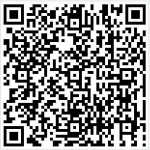This is the first installment of a series about successful event planning for nonprofits originally published in Canadian Fundraiser eNews in July 2010.
Please read parts two and three of this series: Event Success: Practical Promotion Tips and Event Success: Operation & Execution
Event Success: Practical Planning Tips
By Stacy Dyer
Fundraising through events, such as ‘a-thons, is an increasingly popular option for nonprofit organizations. Whether a walk-a-thon, golf tournament, race, or a mustache-a-thon (yes, they exist), a well-organized event can help you increase public awareness of your cause; build support and sentiment within the community; and raise more funds for your mission.
This three-part article series will contain practical tips you can use to turn your next event into a successful donation-a-thon! This first installment will cover tips to help you plan your event, from selecting an appropriate date to making sure your website is ready.
Start Early and Claim the Date
To get the community involved, you should get your event date on the calendar as soon as possible. It’s impossible to guarantee support, but think about what day is most likely to encourage the most participation.
First, choose a weekend day, especially if your primary audience is working professionals. Also, choose a time of year with pleasant weather, since your participants can dress warmly when the weather is cool, but it’s difficult to beat the heat during hot, humid times of year.
Technology Tip: While you may not be a weather forecaster, you can use available tools to pick the best date for your fundraiser. To see the historic average high and low temperatures for any day of the year, go to www.weather.com, enter your city, and click the “Month” tab.
In addition, you should check thoroughly for conflicts. (This is sometimes easier said than done!) Avoid scheduling your event during significant local, national, or international sporting events that may cause a conflict for your supporters. Also, check with other local nonprofit organizations to avoid overlapping events.
Create a Dedicated Publicity Committee
You’ll want to create a publicity plan at least one year ahead of your planned event date. Name a publicity chair and enlist the assistance of a committee of staff and/or volunteers that will help drive publicity-related tasks.
Starting six to 12 months out, the committee should meet at least once per month. Closer to the event, they should meet more frequently to keep everything on track.
Technology Tip: It can be difficult to schedule meetings, especially if you’re including outside volunteers. For a free online scheduling tool, try www.doodle.com or www.setameeting.com. In just a few minutes, you can send an e-mail link to committee members, proposing several different dates and times. Each person indicates his or her availability, and you can easily see when schedules align.
Recruit Corporate Sponsors
‘A-thon events are an ideal opportunity for nonprofits to partner with strategic corporate sponsors who can provide the capital funds needed for critical pre-event planning expenses. Companies may prefer to support your event via in-kind donations of much-needed items, like printing, publicity, or concessions, especially if they can secure a lower cost for supplies.
The most successful sponsorship partnerships are a win-win relationship – exposing both organizations to new audiences and customers. Not only does the sponsor reach new customers, but they can also encourage employees to form fundraising teams and participate in your event.
Corporations sponsor charity events to make a positive contribution to their community and foster goodwill. However you can help them generate publicity for their business will increase both their perceived value and the chance you will receive the sponsorship.
Prominently feature sponsors on event literature, websites, t-shirts, advertising, and signage. Recognize sponsors’ contributions during the event, too. Having different levels of sponsorship available (with corresponding levels of benefits) can help you get more small and medium sized businesses involved.
Solicit Matching Funds
If you can find a corporate sponsor or other benefactor who is willing to provide matching funds, you’ll find that more people will become involved with your event and that you can raise more money. When donations are being matched, participants and donors perceive their efforts as having twice the impact.
Create a Website or Blog
When promoting an ‘a-thon or event, it helps to provide a single place where everyone can access the latest information. Set up a website with a URL that is easy to remember, and link to a blog where you and celebrity guests can post information about the upcoming event. Then put that address on your flyers, direct mail, and other materials. You can even include the website address in listings on community calendars and on t-shirts that are distributed early.
Technology Tip: You can set up your organization’s new blog at no charge by visiting www.blogger.com or www.wordpress.com.
Remove Barriers to Online Giving
According to “Wired Wealthy – Using the Internet to Connect with Your Middle and Major Donors,” a study conducted by Convio, Sea Change Strategies, and Edge Research, 66% of major donors check out an organization online before committing to donate.
The study also found that 80% of major donors have made online charitable donations, and 51% of donors prefer to give online because doing so is fast, efficient, and allows them to give while it’s on their minds.
A well-designed website will appeal to potential donors, reinforcing their desire to be involved with your organization and its mission. State your goals clearly and be upfront about the stewardship of your receipts. Directly ask for the funds you need, and state why you need them. And, make it easy for donors to give directly from your site.
Technology Tip: Your home page and event page should contain three essential items: a concrete definition of your mission, personal descriptions of the impact your organization makes, and a prominently featured “Donate Now” button. For even better conversions, embed a donation form that is secure, simple to use, and requires no additional clicks to other pages.
Conclusion
Proper planning is critical to ensuring your ‘a-thon event is a success. Start early and use these tips to create an event that engages your supporters and the community.
In part two of this series, we’ll look at tips and tools for promoting your event, plus best practices for getting the most out of social media networks and online fundraising efforts.
Read parts two and three of this series: Event Success: Practical Promotion Tips and Event Success: Operation & Execution
-Stacy






